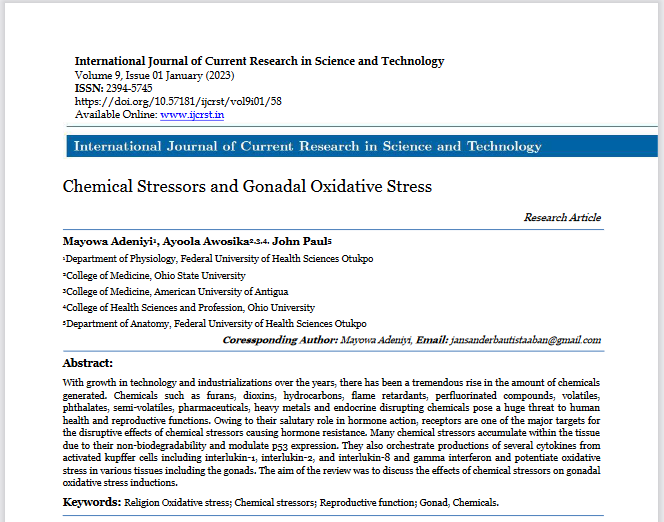Chemical Stressors and Gonadal Oxidative Stress
Main Article Content
Abstract
With growth in technology and industrializations over the years, there has been a tremendous rise in the amount of chemicals generated. Chemicals such as furans, dioxins, hydrocarbons, flame retardants, perfluorinated compounds, volatiles, phthalates, semi-volatiles, pharmaceuticals, heavy metals and endocrine disrupting chemicals pose a huge threat to human health and reproductive functions. Owing to their salutary role in hormone action, receptors are one of the major targets for the disruptive effects of chemical stressors causing hormone resistance. Many chemical stressors accumulate within the tissue due to their non-biodegradability and modulate p53 expression. They also orchestrate productions of several cytokines from activated kupffer cells including interlukin-1, interlukin-2, and interlukin-8 and gamma interferon and potentiate oxidative stress in various tissues including the gonads. The aim of the review was to discuss the effects of chemical stressors on gonadal oxidative stress inductions.

